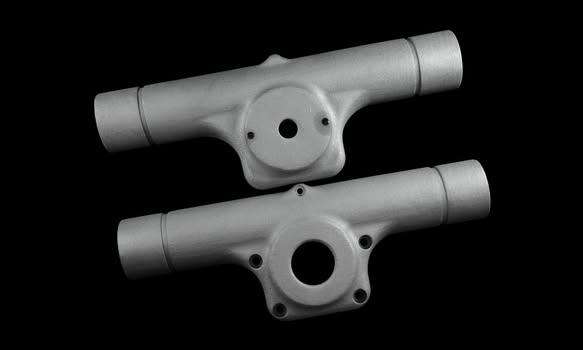The steel industry has significantly influenced real estate development, shaping the skyline of cities and the construction of various buildings, from residential homes to towering skyscrapers. This blog explores the vital role of steel in real estate, highlighting its benefits, applications, and the future trends shaping the industry.
The Versatility of Steel in Construction
One of the primary reasons steel is extensively used in real estate is its versatility. Stainless steel can be fabricated in various shapes and sizes, making it suitable for an array of construction needs. It serves as the backbone for a wide range of structures, from the framework of high-rise buildings to the reinforcement of residential homes. This flexibility allows architects to design innovative structures that would be impossible with other materials. Steel’s adaptability also means it can be used in combination with other materials, enhancing the overall functionality and aesthetics of a building.
Strength and Durability
Steel is renowned for its exceptional strength and durability. Unlike other construction materials, steel can withstand extreme weather conditions such as hurricanes, earthquakes, and heavy snow. This resilience ensures that buildings remain safe and intact over time, providing long-term security for occupants. Additionally, steel’s resistance to pests, such as termites, and its non-combustible nature make it an excellent choice for long-lasting construction. The longevity of steel structures reduces the need for frequent repairs and replacements, contributing to their overall cost-effectiveness.
Speed of Construction
In the fast-paced real estate market, the speed of construction is crucial. Steel offers a distinct advantage in this regard. Prefabricated steel components can be manufactured off-site and quickly assembled on-site, significantly reducing construction time compared to traditional building methods. This efficiency not only accelerates project completion but also minimizes labor costs and disruptions to the surrounding environment. Faster construction times mean quicker returns on investment for developers and less inconvenience for the community.
Sustainability and Environmental Benefits
Sustainability is a critical consideration in modern real estate development, and steel plays a significant role in promoting environmentally friendly construction practices. Steel is highly recyclable, and can be recycled multiple times without losing its properties. This recyclability reduces the demand for raw materials, minimizing waste and lowering the environmental impact. Moreover, steel structures can be designed to incorporate energy-efficient features such as solar panels, green roofs, and advanced insulation systems, further enhancing their sustainability. The use of steel in construction aligns with the growing emphasis on green building practices and the reduction of carbon footprints.
Cost-Effectiveness
While the initial cost of steel may be higher than some other building materials, its long-term benefits make it a cost-effective choice for real estate developers. The durability and low maintenance requirements of steel structures result in significant savings over time. Additionally, the speed of construction and reduced labor costs associated with steel contribute to its overall cost-effectiveness. Developers can achieve a balance between upfront costs and long-term savings, making steel a financially prudent choice for many projects.
Innovations in Steel Technology
The steel industry continues to innovate, introducing new technologies and materials that enhance its performance in construction. Advanced high-strength steels, for example, offer greater durability and load-bearing capacity. These innovations enable developers to create more efficient and sustainable buildings, pushing the boundaries of modern architecture. Technological advancements in steel production and fabrication also contribute to improved energy efficiency and reduced environmental impact, aligning with the goals of sustainable development.
Case Studies: Iconic Steel Structures in Real Estate
Several iconic buildings around the world demonstrate the impact of steel on real estate development. The Burj Khalifa in Dubai, the tallest building in the world, relies heavily on a steel framework to achieve its remarkable height. The Shard in London and the Petronas Towers in Malaysia are other examples of how steel enables the construction of impressive structures that define city skylines. These buildings not only serve as landmarks but also highlight the architectural possibilities that steel offers. The use of steel in these projects showcases its ability to meet the demands of complex designs and ambitious construction goals.
The Future of Steel in Real Estate
The future of steel in real estate looks promising, with ongoing advancements in technology and a growing emphasis on sustainable building practices. Researchers and engineers are continually exploring ways to enhance the properties of steel, making it even more resilient, versatile, and eco-friendly. Innovations such as 3D printing with steel and the development of new alloys are expected to revolutionize the construction industry. Additionally, the integration of smart technologies into steel structures will pave the way for intelligent buildings that optimize energy use, enhance security, and improve overall functionality.
Conclusion
The steel industry’s influence on real estate development is profound and far-reaching. Its versatility, strength, durability, and sustainability make it an essential material for modern construction. As the demand for innovative and efficient buildings continues to grow, steel will remain at the forefront of real estate development, driving the creation of iconic structures and sustainable communities.
By leveraging the benefits of steel, real estate developers can meet the evolving needs of the market, delivering projects that stand the test of time while contributing to a more sustainable future. The steel industry’s ongoing advancements and commitment to sustainability ensure that it will continue to play a pivotal role in shaping the built environment for generations to come.

As the editor of the blog, She curate insightful content that sparks curiosity and fosters learning. With a passion for storytelling and a keen eye for detail, she strive to bring diverse perspectives and engaging narratives to readers, ensuring every piece informs, inspires, and enriches.










